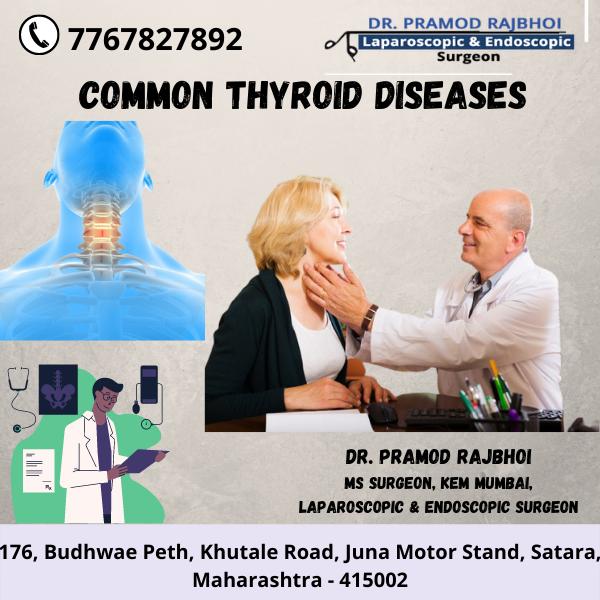Common Thyroid Disease
Thyroid
The Thyroid is a butterfly-shaped gland located in the neck, exactly above the collarbone. It is one of the endocrine glands that produce hormones. Thyroid hormones control the speed of several exercises in the body.
These contain how fast you burn calories and how fast your smoothies are. All of these exercises are your body’s metabolism. To diagnose thyroid problems correct medical history, physical quizzes, and thyroid tests. Sometimes they even resort to an autopsy. Then Your General And Laparoscopic Surgeon Suggest Required Treatments.

What is Role of Metabolism in Body ?
Treatment depends on the problem but may include medication, radioactive iodine treatments, or Thyroid surgery. Your Endoscopy surgeon will perform the correct tests and advise you on the appropriate treatment. Your thyroid has an important job to do in your body to dissolve and control the thyroid hormones that control the metabolism.
Metabolism is a process where the food you take in your body is converted into energy. This energy is applied throughout your body to keep your bodily systems functioning well. Let your metabolism be an author. It takes raw energy and uses it to fuel it bigger. If thyroid problems arise, thyroid surgery is helpful for relief.
Causes of Thyroid Disease
- Iodine deficiency
- Autoimmune diseases
- Inflammation
- Bumps
- Cancerous growths
- A cure for radiation
- Certain inherited disorders.
Types of thyroid complications
- Hypothyroidism
- Hyperthyroidism
- Goiter
- Thyroid cancer
How to Diagnose thyroid disease?
- Physical Exam
- Medical history
- Blood tests
- Thyroid antibody test
- Ultrasound
- Thyroid check
- Radioactive iodine absorption test.
